Hyundai Tucson vs Subaru Forester – Which model is better for everyday use?
Both models have their strengths – but which one suits you more?
Compare performance, efficiency, price and space directly: Hyundai Tucson or Subaru Forester?
Costs and Efficiency:
Price and efficiency are often the first things buyers look at. Here it becomes clear which model has the long-term edge – whether at the pump, the plug, or in purchase price.
Hyundai Tucson has a slightly advantage in terms of price – it starts at 30600 £, while the Subaru Forester costs 34700 £. That’s a price difference of around 4071 £.
Fuel consumption also shows a difference: Hyundai Tucson manages with 1 L and is therefore clearly more efficient than the Subaru Forester with 8.10 L. The difference is about 7.10 L per 100 km.
Engine and Performance:
Under the bonnet, it becomes clear which model is tuned for sportiness and which one takes the lead when you hit the accelerator.
When it comes to engine power, the Hyundai Tucson has a convincingly edge – offering 252 HP compared to 136 HP. That’s roughly 116 HP more horsepower.
In acceleration from 0 to 100 km/h, the Hyundai Tucson is convincingly quicker – completing the sprint in 7.90 s, while the Subaru Forester takes 12.20 s. That’s about 4.30 s faster.
In terms of top speed, the Hyundai Tucson performs barely noticeable better – reaching 194 km/h, while the Subaru Forester tops out at 188 km/h. The difference is around 6 km/h.
There’s also a difference in torque: Hyundai Tucson pulls clearly stronger with 367 Nm compared to 182 Nm. That’s about 185 Nm difference.
Space and Everyday Use:
Beyond pure performance, interior space and usability matter most in daily life. This is where you see which car is more practical and versatile.
Both vehicles offer seating for 5 people.
In curb weight, Hyundai Tucson is somewhat lighter – 1520 kg compared to 1693 kg. The difference is around 173 kg.
In terms of boot space, the Hyundai Tucson offers a bit more room – 620 L compared to 508 L. That’s a difference of about 112 L.
In maximum load capacity, the Hyundai Tucson performs barely noticeable better – up to 1799 L, which is about 68 L more than the Subaru Forester.
When it comes to payload, Hyundai Tucson minimal takes the win – 545 kg compared to 492 kg. That’s a difference of about 53 kg.
Who comes out on top?
Overall, the Hyundai Tucson shows itself to be outperforms in nearly all aspects and secures the title of DriveDuel Champion.
It convinces with the more balanced overall package and proves to be the more versatile choice for everyday use.
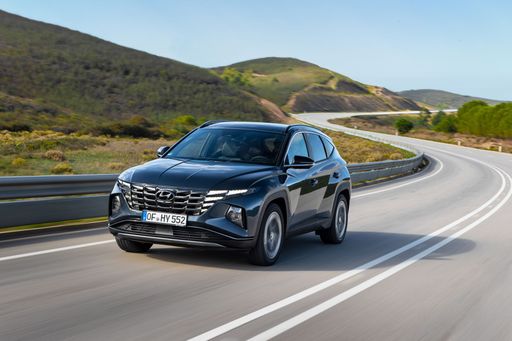
Hyundai Tucson
Hyundai Tucson
The Hyundai Tucson is a standout choice in the compact SUV segment, offering a perfect blend of style, comfort, and practicality. Its modern design is complemented by a spacious interior that provides ample room for passengers and luggage alike. With advanced technology and safety features, the Tucson ensures a smooth and enjoyable driving experience.
details @ hyundai.news
@ hyundai.news
 @ hyundai.news
@ hyundai.news
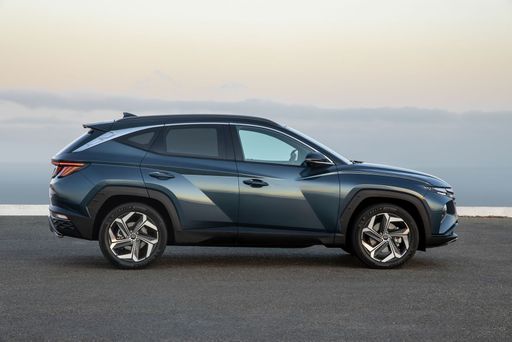 @ hyundai.news
@ hyundai.news
 @ hyundai.news
@ hyundai.news
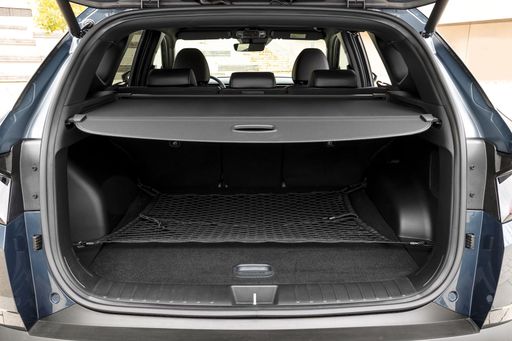 @ hyundai.news
@ hyundai.news
Subaru Forester
The Subaru Forester is a versatile SUV known for its impressive off-road capabilities and practical design. With a spacious interior and advanced safety features, it offers comfort and security for both city driving and outdoor adventures. Its reliable performance and all-wheel-drive system make it a popular choice among those who appreciate a combination of functionality and rugged charm.
details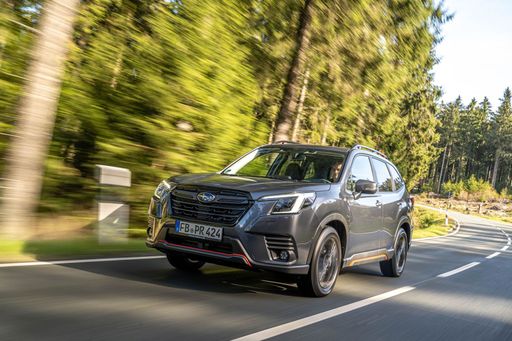 @ Subaru
@ Subaru
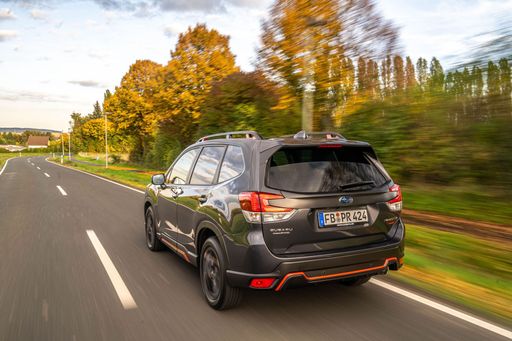 @ Subaru
@ Subaru
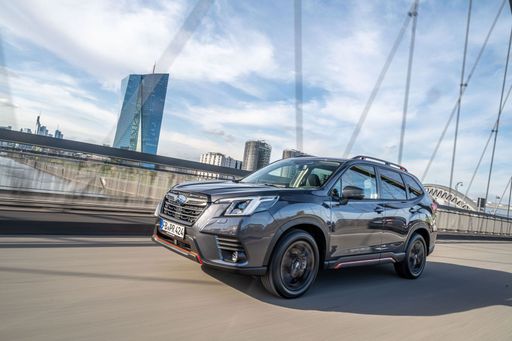 @ Subaru
@ Subaru
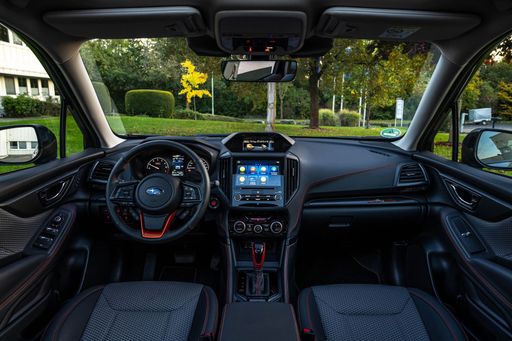 @ Subaru
@ Subaru
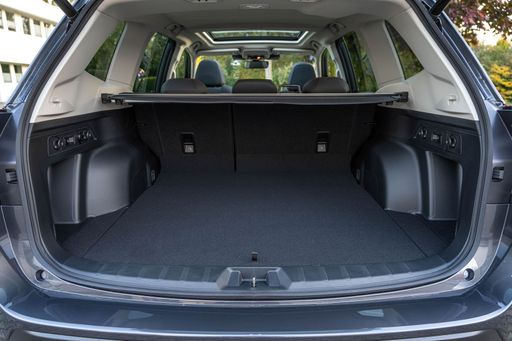 @ Subaru
@ Subaru

|

|
|
|
|
Costs and Consumption |
|
|---|---|
|
Price
30600 - 46300 £
|
Price
34700 - 42200 £
|
|
Consumption L/100km
1 - 6.9 L
|
Consumption L/100km
8.10 L
|
|
Consumption kWh/100km
-
|
Consumption kWh/100km
-
|
|
Electric Range
64 - 70 km
|
Electric Range
-
|
|
Battery Capacity
-
|
Battery Capacity
-
|
|
co2
22 - 156 g/km
|
co2
183 g/km
|
|
Fuel tank capacity
42 - 54 L
|
Fuel tank capacity
48 L
|
Dimensions and Body |
|
|---|---|
|
Body Type
SUV
|
Body Type
SUV
|
|
Seats
5
|
Seats
5
|
|
Doors
5
|
Doors
5
|
|
Curb weight
1520 - 1889 kg
|
Curb weight
1693 - 1739 kg
|
|
Trunk capacity
546 - 620 L
|
Trunk capacity
508 L
|
|
Length
4510 - 4520 mm
|
Length
4670 mm
|
|
Width
1865 mm
|
Width
1830 mm
|
|
Height
1650 mm
|
Height
1730 mm
|
|
Max trunk capacity
1721 - 1799 L
|
Max trunk capacity
1679 - 1731 L
|
|
Payload
525 - 545 kg
|
Payload
446 - 492 kg
|
Engine and Performance |
|
|---|---|
|
Engine Type
Diesel MHEV, Petrol MHEV, Petrol, Full Hybrid, Plugin Hybrid
|
Engine Type
Petrol MHEV
|
|
Transmission
Automatic, Manuel
|
Transmission
Automatic
|
|
Transmission Detail
Dual-Clutch Automatic, Manual Gearbox, Automatic Gearbox
|
Transmission Detail
CVT
|
|
Drive Type
Front-Wheel Drive, All-Wheel Drive
|
Drive Type
All-Wheel Drive
|
|
Power HP
136 - 252 HP
|
Power HP
136 HP
|
|
Acceleration 0-100km/h
7.9 - 11.6 s
|
Acceleration 0-100km/h
12.20 s
|
|
Max Speed
180 - 194 km/h
|
Max Speed
188 km/h
|
|
Torque
265 - 367 Nm
|
Torque
182 Nm
|
|
Number of Cylinders
4
|
Number of Cylinders
4
|
|
Power kW
100 - 185 kW
|
Power kW
100 kW
|
|
Engine capacity
1598 cm3
|
Engine capacity
1995 cm3
|
General |
|
|---|---|
|
Model Year
2024
|
Model Year
2025
|
|
CO2 Efficiency Class
E, F, D, B
|
CO2 Efficiency Class
G
|
|
Brand
Hyundai
|
Brand
Subaru
|
What drive types are available for the Hyundai Tucson?
Available configurations include Front-Wheel Drive or All-Wheel Drive.
The prices and data displayed are estimates based on German list prices and may vary by country. This information is not legally binding.
